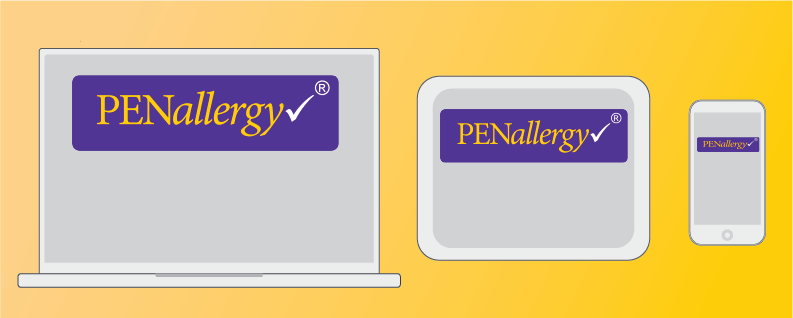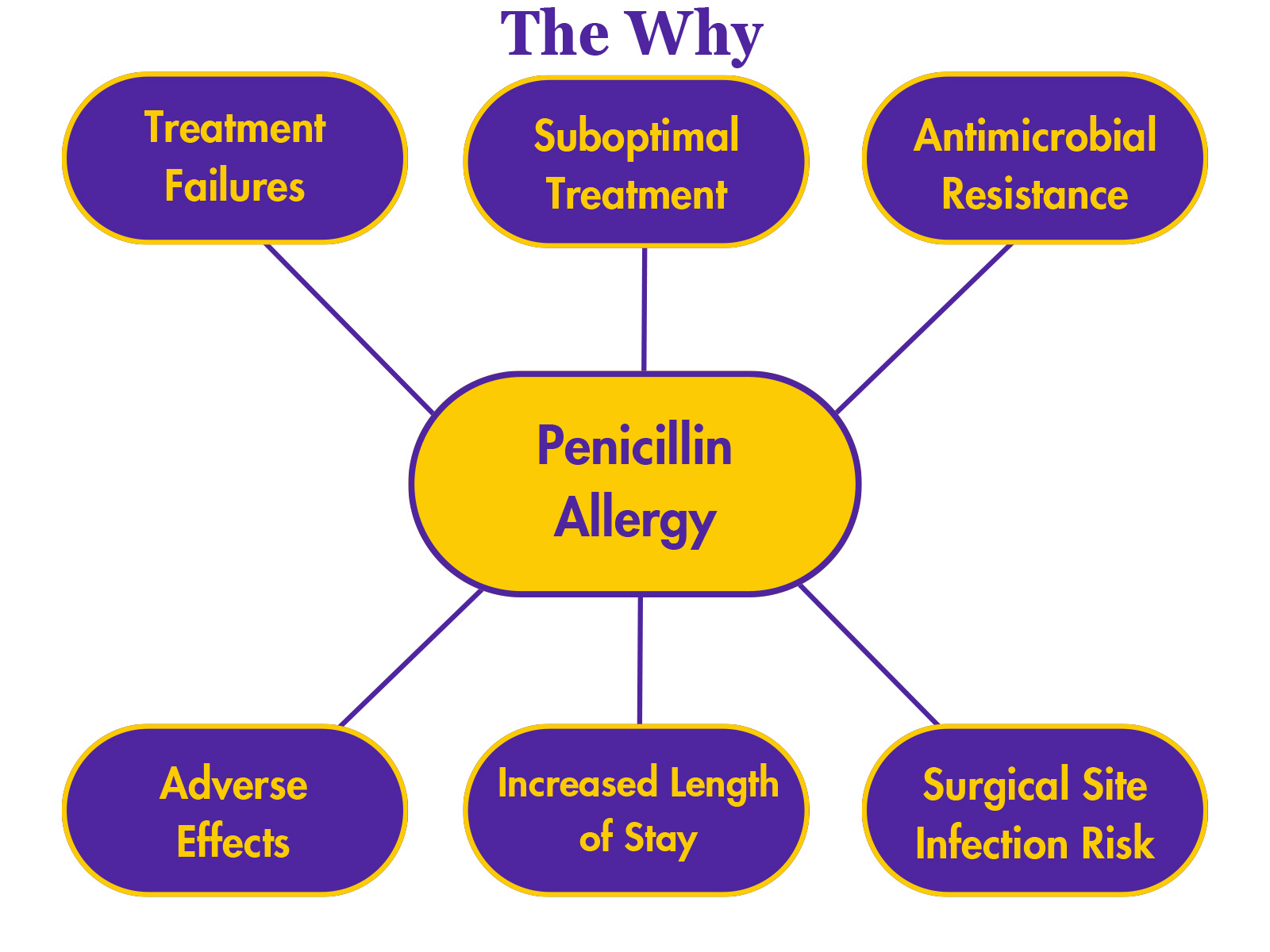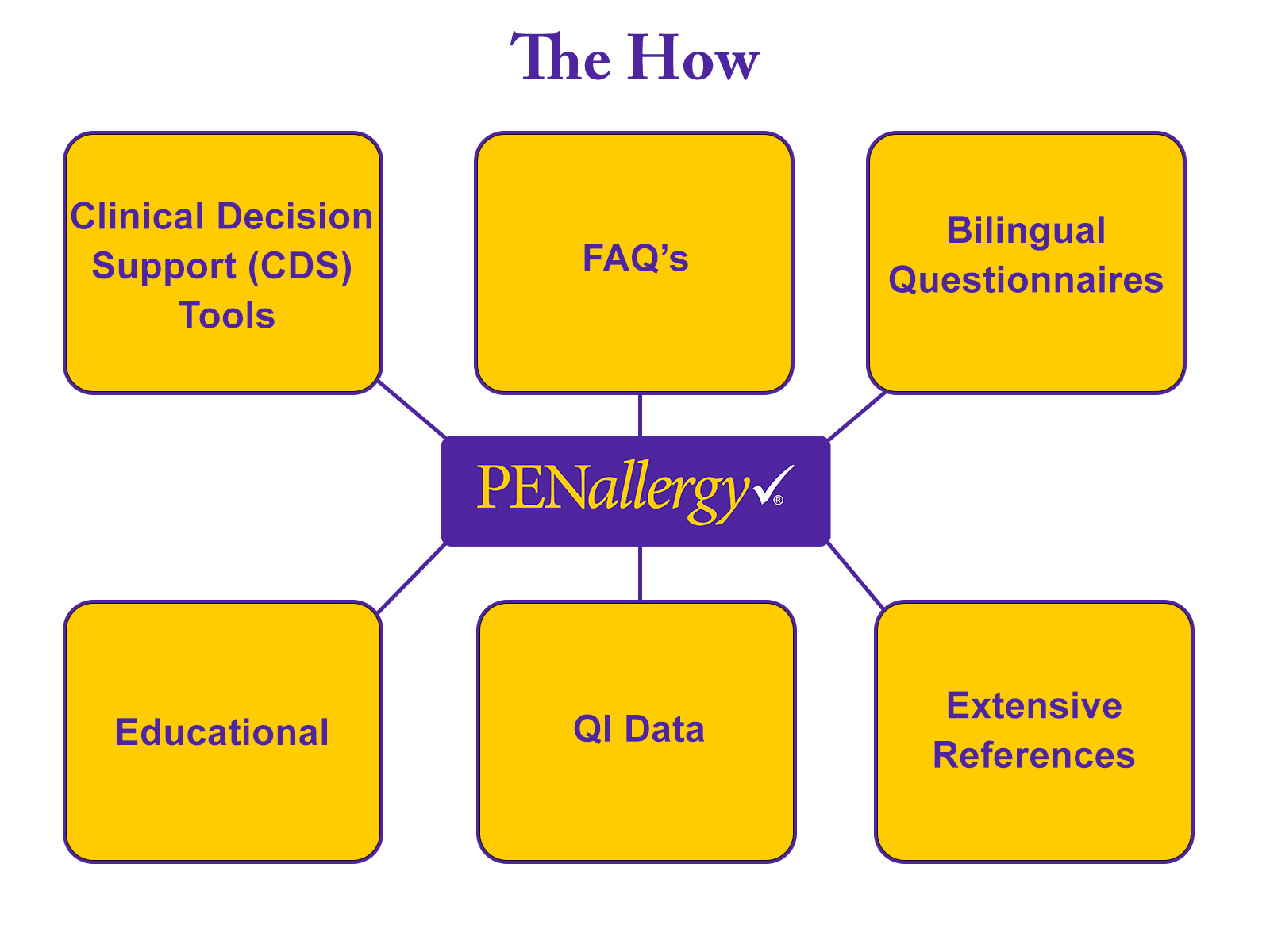
The key to penicillin allergy delabeling
An Introduction Video to Penicillin Delabeling
Do you Know?
• Penicillin is the most common drug allergy in hospitalized patients
• 10 - 20% of the US population have a documented Penicillin allergy
• More than 95% of Penicillin allergic patients are not Penicillin allergic
• 80% of people lose their allergy after 10 years.
• Serious allergies such as anaphylaxis are rare - estimated to be< 0.04%
• The most common allergic reaction is a cutaneous eruption/rash
• Most Penicillin allergies are acquired in childhood

10% of the population reports a penicillin allergy but <1% of the whole population is truly allergic.
CDC 2017
When there is a penicillin allergy label in the EHR there are increased:
- Healthcare costs
- Length of stay (LOS)
- Readmissions
- Mortality
- Surgical site infections (SSI)
- C difficile, MRSA, VRE infections
- Antimicrobial resistance
- Use of inappropriate antibiotics
- Antibiotic side effects
- Prescription cost for children


Positive clinical effects from Penicillin allergy delabeling
- Enable beta-lactam antibiotic treatment options
- Lower adverse drug events (ADEs)
- Reduce exposure to antibiotics causing Clostridioides difficile infections
- Enable use of appropriate preoperative prophylactic antibiotic
Who Will Benefit?
Healthcare Systems
Hospitals - Inpatients
Offices - Outpatients
Urgent Care Centers
Ambulatory Surgical Centers
Emergency Departments
Antimicrobial Stewardship Programs
Patients
Adult
Elderly
Children
Clinicians
Orthopedic surgeons
Colorectal Surgeons
Obstetrics - Gynecology
Oncologists
There are significant financial benefits from delabeling patients
- Shortened length of stay (LOS)
- Decreased readmission rates
- Reduction in healthcare expenses

PENallergy✓® guides healthcare providers in delabeling penicillin allergic patients.
- Provides clinical decision support (CDS) tools for evaluation of adults and children that allow delabeling of penicillin allergy
- Enables risk stratification into low or high risk by history alone without penicillin skin testing (PST)
- Incorporates comprehensive, user-friendly bilingual allergy questionnaires for adults, children and preoperative patients.
- Implements removal of a penicillin allergy from the EHR
- Point-of-care
- Details the patients penicillin allergy history
- Provides education and training for pharmacists, nurses, physicians, and advanced practice providers to delabel patients
PENallergy✓® is available by subscription and contains the following components:

- Compatible with all mobile devices
- Clinical decision support (CDS) tools to enable delabeling by history alone.
- Bilngual patient questionnaires- comprehensive and user-friendly.
- Inpatient/Outpatient
- Children
- Preoperative
- FAQs - comprehensive and well referenced
- Educational video for all healthcare providers discussing Penicillin allergy and use of PENallergy✓®action plan for delabeling
- Timely data tracking, analysis and reporting that can be used for quality improvement (QI) by the Antimicrobial Stewardship Team
- Bibliography - Extensive and up-to-date
Which patients benefit from delabeling?
- Adults and Children
- Hospitalized
- Outpatients
- Surgical - appropriate antibiotic prophylaxis
- Obstetrical - appropriate Group B streptococcus treatment
- Emergency Department



